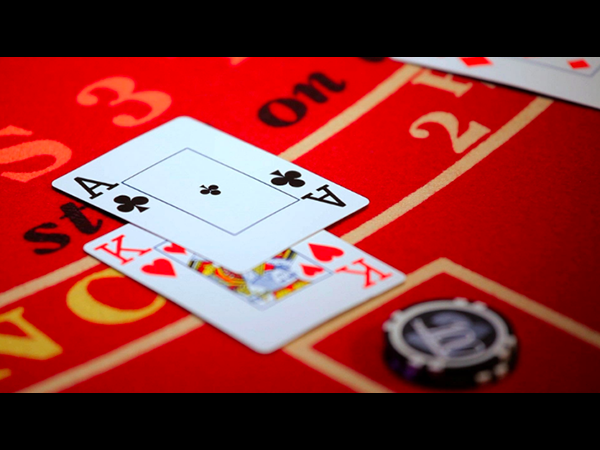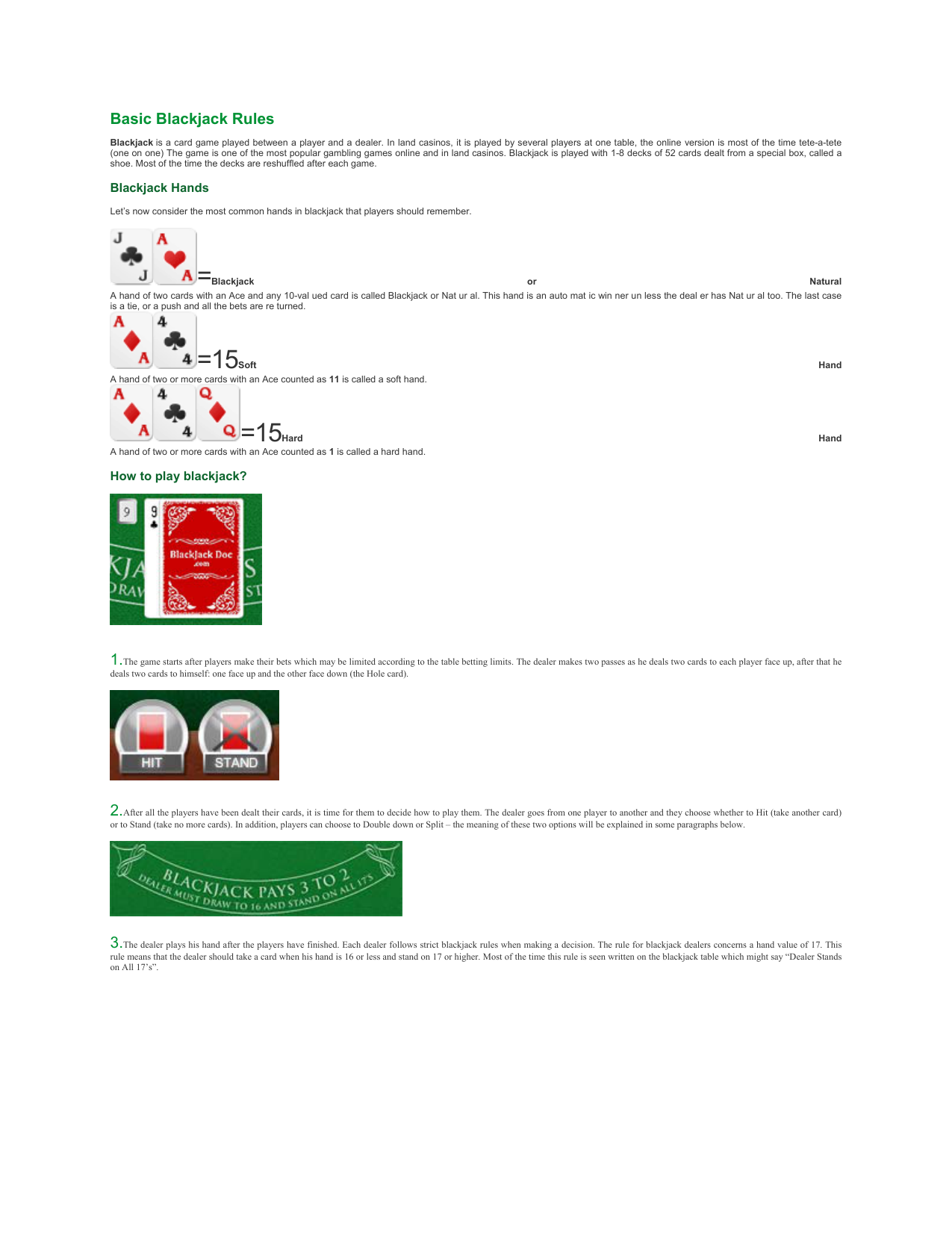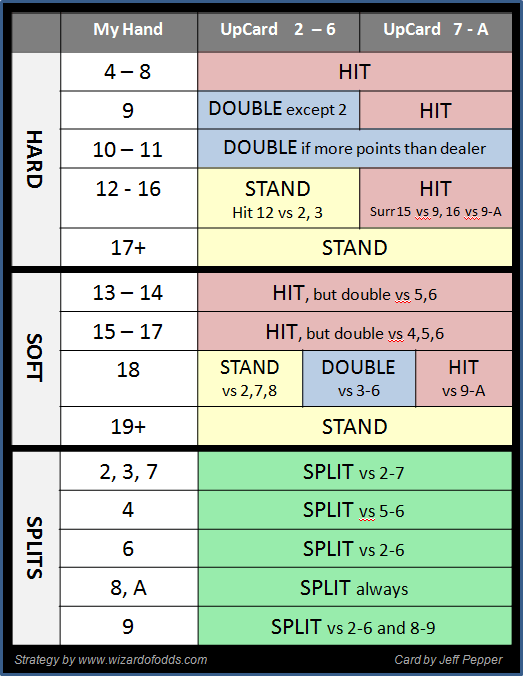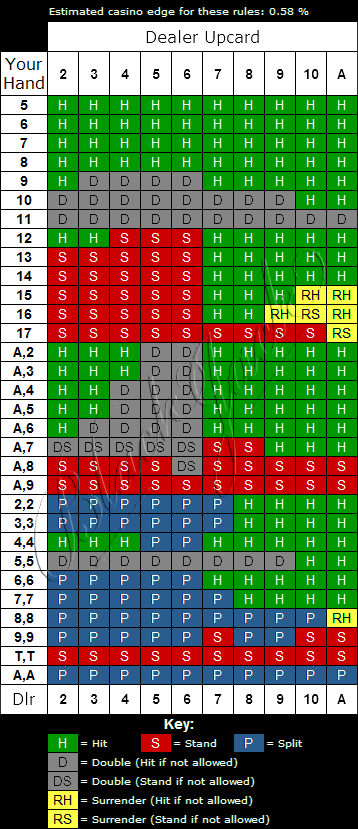If the dealer has an ace showing, you can choose to receive even money on your blackjack before they check. If the dealer has a 10 showing and they have an ace as their hole card, you will push. If the dealer has an ace showing, you can buy insurance which means you put up half your bet and get paid 1:1 if they have a blackjack. Blackjack Basics. Premise of the Game. Blackjack is pretty simple. The basic premise of the game.
Ace-seven is by far the most difficult hand for the professional blackjack player to handle. Depending on what the dealer is showing, you will either hit, stand, or double down.
Dealer In Blackjack
Basic Strategy tells us that we should double if the dealer is showing 3 through 6, stand on 2, 7, and 8, and hit on 9, 10, and A. This may come as a shock to some since common sense tells us to stay with an 18 regardless of what the dealer has. Let's look at the math behind the strategy.

First, we must look at A-7 as a plain old 18. Basic Strategy dictates that we stand on a pat 18 regardless of what the dealer is showing; we want to get to 17 or higher and then let Lady Luck determine the outcome. This isn't necessarily the case for a soft 18.
- If the dealer is showing a 2, the return on an 18 is $.12 for each dollar invested.
- For 3 through 6, this jumps up ranging from $0.40 to $0.50 per dollar.
- 7 is also $0.40.
- At 8, it goes back down to $0.11.
- 9 through A plummets into a negative return of $0.18 to $0.10 loss per dollar.
So is it really worthwhile to go against the common sense factor and hit an 18 if the dealer is showing 9-A?
- Hitting A-7 on a dealers 9 gives us a negative return of $0.10,
- 10 a negative return of $0.14, and
- Ace a negative return of $0.09.
The spread here, while not seeming like much, is less than the -$0.18 to -$0.10 return of staying. To minimize the damage, hitting on these cards is a necessity.
Doubling is the third option with this hand. In this case, you count the hand as an 8 and pray for a 9 or 10, or you count it as an 18 and hope for an Ace through 3.
First of all, doubling when the dealer is showing:
- 9 through A gives us a -$0.29 to -$0.36 return, far greater of a loss than hitting. So doubling on those cards is out of the question.
- Doubling on 8 is also a negative return (-$0.03), whereas it's a positive return to hit. Again, out of the question.
- Doubling on 7 is a positive return of $0.22, which is less than the $0.40 you will get with staying. If the dealer is showing a 7, it makes economic sense to stand.
- Doubling on the dealer's 2 is also $0.12 return, but it is less than a cent less difference of a return than standing. In the long run, this adds up to major dollars, believe me. You will want to stay rather than risking the double in this case.
- That leaves 3 through 6. The math here gets tricky, so pay careful attention. The numbers above regarding standing on 18 don't take into account the power of the Ace. As you know, the Ace can be counted as either a 1 or an 11, and because of this, hitting on A-7 is not nearly as dangerous as hitting a pat 18. In fact, the 23% (3/13) chance of drawing a card to better your 18 makes the diminished return on doubling the right move.
While the return ranges from $0.18 to $0.38 (compared to the $0.40 to $0.50 of staying), the 23% odds of improving plus the doubled amount of money pumped into the hand make doubling the most profitable choice.
Best Blackjack Bonuses
These bonuses allow you to play blackjack to clear the bonuses wagering requirements.
- Intertops Casino Classic
100% Up To $/€100
Rating
4.3/54.4/54.2/54.3/5
- Liberty Slots Casino
100% Up To $/AU$259
Rating
3.8/54.4/53.3/53.8/53.8/5
- Lincoln Casino
100% Up To $/AU$1000
Rating
4.0/54.4/53.8/53.7/54.0/5
More on How to play Blackjack
How well do you know the rules of blackjack? If you’ve read our article in How to Play Blackjack, you should feel pretty comfortable playing in most blackjack games. However, blackjack rules can very between casinos, meaning that what you’ve experienced in one blackjack game might not be what you see at the next table.

While most of these changes are relatively minor, you’ll still want to understand how different blackjack rules can affect the game. After all, there’s nothing worse than making a mistake and losing money because you misunderstand the rules of the game. Here are some of the most important blackjack rules, along with some common variations you might see.
Splitting Hands
Common Rule: Players may split any time they begin a hand with a pair. This allows them to play two separate hands, each of which will be dealt a new second card. Players may split to up to four separate hands if they continue to receive pairs. However, there are some restrictions; for instance, players are typically not allowed to play their hands after splitting with aces (much like when doubling down, they are forced to stand), and if they do receive a ten to go with an ace, it will not count as a blackjack.
Dealer Blackjack Rules
Alternative Rules: Many casinos make slight alterations to what the player may or may not do after splitting their hand. In some cases, players have some options after splitting aces; they may be able to split the hand again if they receive another ace, and in some cases, they may even be allowed to play the hands as normal.
Also, some casinos cap the number of hands a player can split to. It’s not unheard of for a casino to allow players to only split to three hands at a maximum, or even to not allow re-splitting at all, meaning a maximum of two hands are allowed.
Blackjack Dealer Rules Ace 1
Doubling Down
Common Rule: Players may double down with any two card hand. They do so by making a second bet equal to their original bet. The player receives one additional card and then must stand.

Alternative Rules: Some casinos put restrictions on when players may double down. While it’s usually permitted to double down after splitting your hands, some casinos do not give the player this option. In a few casinos, the player may only double down on hands with scores of 9, 10 or 11. Promotions occasionally exist that allow players to “triple down,” which allows the player to put even more money on the table when the odds are favorable.

Surrendering
Common Rule: There is a lot of variation in surrender rules. Perhaps the most common rule is “late surrender.” This allows the player to surrender their hand after the dealer checks for a blackjack. If the player surrenders, they immediately lose half of their bet, and the hand is over for them. The player usually invokes this rule in situations where the dealer has an overwhelming advantage, and saving half of the original bet is preferable to risking the entire bet.
Alternative Rules: In many casinos, surrendering is not offered. In others, the surrender rules are more favorable to the player. This occurs in cases where the player may surrender before the dealer checks for blackjack, an option known as “early surrender.”
Dealer Blackjacks

Common Rule: The dealer deals out two cards to himself at the beginning of the hand. The dealer immediately “peeks” to see if he has blackjack; if he does, it is revealed, and all player bets lose (except for blackjacks, which push). If he does not have blackjack, the hand continues as normal.
Alternative Rules: In some cases, the dealer will not check for blackjack until after all players have finished playing their hands. Usually, this means that in the case of a dealer blackjack, players will lose all bets made, including splits and double downs. Some casinos limit how much the player can lose in these cases, with one rule being that the player will lose all bets on hands that busted, as well as the bets on hands that were split, but not any bets made from doubling down on a hand.
Some casinos also mix these rules, having the dealer peek for an ace (when a blackjack is fairly common), but not peek if the dealer is showing a ten.
Player Blackjacks
Common Rule: Player blackjacks win at 3-2 odds. If the dealer also has a blackjack, the bet is considered a push.
Alternative Rules: Unfortunately, most alternative rules dealing with player blackjacks work in the casino’s favor. Some casinos offer less than 3-2 odds on a blackjack; 6-5 is common, though 1-1 and 7-5 can also be seen occasionally. On the bright side, some blackjack games allow the player to win even if the dealer also shows a blackjack, and promotional deals sometimes allow suited blackjacks (or even all Blackjacks) to pay at higher odds, such as 2-1.
Dealer Playing Rules
Common Rule: The dealer must stand on all hands of 17 or more, and hit on all hands of 16 or less.
Alternative Rule: In many casinos, the dealer also hits on a soft 17. This rule has a small effect on player strategy and favors the house substantially.